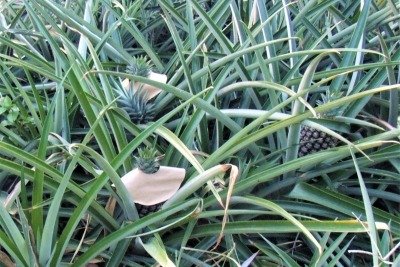There are various factors affecting the rate of transpiration in plants, particularly stomatal transpiration.
These are divided into plant factors and environmental factors.
The plant factors refer to inherent characteristics of plants and include root-shoot ratio, leaf area, leaf structure, and their inherent ability with respect to the opening and closing of stomata.
These factors are also described as internal, their manifestation being dictated by the genetic factor of plant growth and development.
The environmental factors are treated on another page. A link is provided at the bottom of this page.
Plant Factors Affecting the Rate of Transpiration
1. Root-shoot ratio
With all other plant factors and the outside environment being equally favorable, the rate of transpiration tends to increase with a higher root-shoot ratio.
For example, it is expected that a plant with a root: shoot value of 1 (example: root area/leaf area = 1/1 = 1) will tend to transpire faster than another plant with a root to shoot ratio of 0.5 (example 0.5/1 = 0.5).
This is because a plant with more root surface area will absorb more water provided that soil water is available.
More water within the plant will mean a steeper plant-to-atmosphere vapor pressure gradient and more water to transpire within a time duration.

Take note from the given numerical examples (1/1 = 1 and 0.5/1 = 0.5) that with equal shoot area (presumed constant at 1, the denominator in the given fractions), a higher root: shoot ratio means that the plant has more root area (1 against 0.5, the numerators in the given fractions).
Practical application: It is possible to reduce the rate of transpiration (abruptly but temporarily) of any plant by root pruning.
Conversely, the efficiency of the plant to absorb water can be improved through enhanced root development.
2. Leaf area and a number of stomata
A plant with a greater total leaf area will transpire more water compared to one having less.
However, the rate of transpirational water loss is greater per unit area of leaf surface in smaller plants, those having lesser total leaf area.
This was shown by Devlin (1975) with data obtained by Miller (1938) from two varieties of corn (maize).
One variety (Pride of Saline Corn) had a greater leaf area of 14,568 sq. cm while the other (Sherrod White Dent Corn) had only 12,989 sq. cm.
The data showed that the bigger plant transpired less per unit area of the leaf surface at 629 g of water per sq. m in one hour while the smaller plant transpired 723 g/sq. m/hour.
But on a per whole plant basis, the bigger plant transpired more at 918 g of water in 6 hours while the smaller plant only transpired 784 g within the same period.
According to Devlin (1975), the surfaces of leaves of different plant species may contain from 1,000 to 60,000 stomata per square centimeter.
Therefore, it is expected that a bigger plant will have more stomates, the main passageway for the evaporation of water from plants.
Practical application: It is common to trim the leaves of broadleaved seedlings before transplanting, like coffee, to one-third or thereabout of the original length to reduce transpirational loss.
It is aimed to prevent desiccation and thus improve the chance of newly field-planted seedlings to survive under field conditions.
3. Leaf structure
Several structural features lessen the rate of transpiration. These include thick cuticles, thick cell walls, sunken stomata, and hairs or pubescence.
In general, xerophytic plants which are adapted to dry, hot climates have thick cuticles than those which are adapted to cool, moist climates.
Leaves that develop in the open sun also have thicker cuticles than those which develop under shade.
The cuticle which is made of wax has a limiting effect on the transpiration rate by hampering the diffusion of water vapor to the outside atmosphere.
Sunken stomata, as in adelfa or Nerium oleander, also lessen the rate of transpiration by sheltering the boundary layer from wind movement.
Likewise, the presence of dry epidermal hairs or pubescence on the leaf surfaces tends to lessen the rate of transpiration by acting as windbreaks.
As such, wind movement on the leaf surface will be reduced so that the boundary layer is retained.
4. Stomatal movement
The stoma is the plant pore through which water primarily escapes in the process of transpiration.
But in plants that exhibit CAM (crassulacean acid metabolism) photosynthesis, like pineapple and many desert plants, the stomata close during the daytime and open at night.
This diurnal movement regulates photosynthesis while at the same time conserving water.
Otherwise, if the stomata remain open throughout the day, as in most plants, the magnitude of water loss at the daytime will be high.
LITERATURE CITED
DEVLIN R. 1975. Plant Physiology. New York, NY: D. Van Nostrand Company. 600 p.
